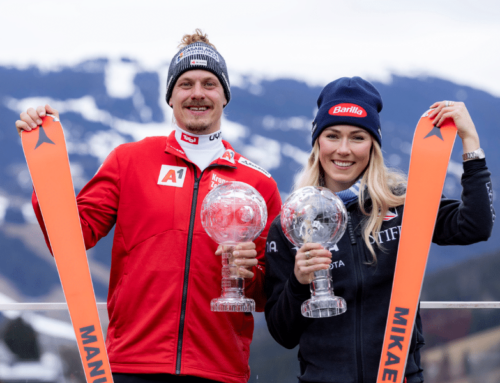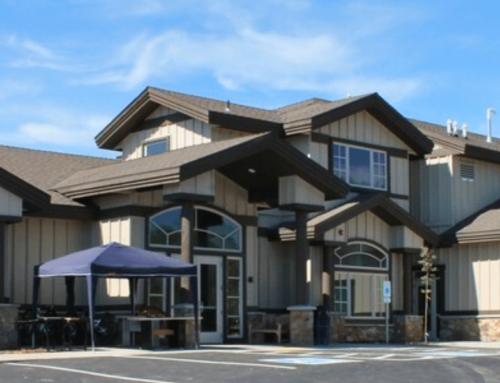After a stellar year for college racers, USST and NCAA keep the conversation going
On March 18, U.S. Ski and Snowboard issued this brief update to help define its relationship with collegiate skiing. It references a conference call in early March hosted by U.S. Ski & Snowboard with EISA and RMISA college coaches to “further discuss initiatives that are being taken to build bridges between the U.S. Ski Team, U.S. Ski & Snowboard and collegiate ski racing programs.”
The call was the culmination of outreach that started last year, after the heated debate and discussion surrounding the relationship of college skiing and U.S. Ski and Snowboard’s development pipeline.
“We made a huge effort to reach out to clubs last summer,” said U.S. Ski & Snowboard Alpine Development Director Chip Knight, who was part of the conference calls with nearly every college team in an effort to connect with athletes and better understand their perceptions and needs. The conversations typically did not have a tight agenda, but were more an opportunity to connect, discuss and suggest ideas. With the latest update, Knight says, “We were trying to circle back on those conversations, and direct outreach to athletes, to address what we had gleaned.”
A common piece of feedback was that U.S. Ski & Snowboard does not care about college. “It’s just not true,“ said Knight, who also acknowledged his organization had not effectively conveyed or fully embraced a collaborative relationship with NCAA entities. “It is a vital ecosystem and a huge part of our domestic pipeline. It is also part of the elite pipeline.”
With this year’s breakout success of American NCAA athletes, such as Paula Moltzan, Erik Arvidsson and Jett Seymour, the American ski racing community no longer questions the legitimacy of NCAA skiing for developing athletes in the U.S. Meanwhile, the demographics of ski racing, especially in this country, indicate that the athletes who get into the sport expect to pursue a college education. It follows that, if education is part of the journey, participation will increase. Yet it remains difficult to integrate NCAA athletes with U.S. Ski Team development. What will it take to make it happen?
Our unique advantage
Andy Leroy, head coach at Denver University for the past 15 years, and newly appointed head coach at University of Colorado, has perhaps the most experience with college athletes moving onto their own — mostly foreign — national teams. Under his watch, Leif Kristian Haugen led the way for the many Norwegians who have pursued World Cup spots while also racing on the NCAA circuit. Inspired by Haugen, Trevor Philp led Canadian athletes, like Erik Read, to pursue a college education and NCAA skiing while also pursuing a World Cup career.
In these cases, LeRoy says, the efforts were largely athlete driven with little national team collaboration. The potential for developing athletes with national coordination and support, in our own country, is huge. As LeRoy says, “What we could do with our American athletes — it’s limitless.”
Leveraging resources
National teams and collegiate ski teams each have their own advantages and deficiencies. The national team has superior off-season training, international exposure and tech/equipment support, while college programs offer an education, career development and a true team environment. National team status carries sponsor support and visibility, while colleges have significant infrastructure resources (Think athletic facilities, trainers, support for every aspect of health and wellness) and alumni networks. Ideally these complementary assets could create synergies to catapult American athletes.
The biggest single hurdle for college athletes, due to NCAA rules, is getting high-quality off season training. This is why training camps for college athletes that are organized under the umbrella of the national team, are critical. One of the potential initiatives Knight is excited about is an annual spring-fundamentals camp in Mammoth in May, after most colleges are out. This would be in addition to the collegiate summer camps that USSS helped organize and run before COVID and perhaps compact fall training sessions at indoor facilities. None may be possible this year with continued COVID restrictions, but planning them well in advance for future years — and getting the information to athletes early so they can plan accordingly — will help aggregate and accommodate top college skiers.
Getting across the pond
International exposure has been especially difficult for top college athletes, whose breaks do not all align. “One success was having so many upper level collegiate athletes in Europe this year,” says Knight. With many college athletes learning remotely or taking the winter off, it opened up the option for them to get critical European exposure. “This has been tough for us to solve forever. It was pretty cool to see them slugging it out over there.”
Knight would like to find a way to create a winter trip similar to the summer project, where college athletes have an opportunity to go to Europe for two weeks of competition. “It is not easy to solve uniformly, but it helps us have a more progressive discussion around the FISU calendar,” says Knight, who sees that as another potential bridge.
Planning ahead, together
Calendaring is key, both in planning camps and in avoiding FIS-UNI and NorAm calendar conflicts, so that college athletes targeting the NorAms can realistically pursue both.
“If NorAm is the target series, it is easy to work with the U.S. Ski Team,” says Knight. For C and D team athletes of both genders, NorAms are a major part of the season and of national team criteria, so for true collaboration it is critical to schedule them with college skiers in mind. Another bit of progress Knight points to, is having an NCAA title as an objective benchmark in U.S. Ski Team criteria, albeit a high one, as it has to also coincide with a NorAm fixed World Cup start spot. “The college coaches want more,” Knight acknowledges, “but it’s there.”
College coaches would like to see fluidly that can utilize NCAA racing throughout an athlete’s development path, as appropriate, rather than making a one-time hand-off of college athletes to the national team. Dartmouth women’s coach John Dwyer suggests athletes can “race NCAA all the way through until they are skiing World Cup full time.” He notes that Tanguy Nef was named to the Swiss A Team directly from Dartmouth during his junior year, after having split time between the NCAA and World Cup circuits (Nef entered Dartmouth ranked 220 in the world in slalom and is now ranked 15th). College athletes need three NCAA races — two to qualify and the championships — to help their teams. “If they do that even for one or two years that’s all they need to do,” says Dwyer. In exchange they will have benefitted tremendously from college resources and the college experience.
Embracing the non-linear path
“Skiing is the only college sport where professionals and amateurs intermix and it’s totally legal,” says LeRoy. “We can take better advantage of that.” LeRoy suggests that begins by allowing and even encouraging the country’s top athletes to continue developing through college. “The alphas of U.S. skiing need to be pursuing education through college as easily as they were before,” says LeRoy. This requires increased flexibility and patience, which is more challenging for a national team.
A basic conflict between the collegiate and national team systems is that national team coaches, in any country, are necessarily focused on athletes advancing through criteria. Meanwhile, college coaches have the luxury of a four-year window — without the urgency of yearly criteria — in which to maximize each athlete’s personal and athletic potential.
LeRoy cites Pioneers’ Jett Seymour (U.S.) and Erik Read (CAN) as examples of non-linear progress. Both entered college as part of their respective national teams, ultimately lost their team status, then leap-frogged to emerge stronger and World Cup-ready in their final years racing college. During that time, their college program offered stability and support. “I don’t care about criteria or a jacket,” says LeRoy. “I’m just looking at the athlete as a whole. I rarely look at points until they are 15.” That, says LeRoy, is the level athletes need, upon leaving college, to have World Cup opportunity.
Shared custody
The shared D team approach, which essentially lets athletes work between home programs and the national team, was abandoned last year in favor of a centrally-managed national D Team. The very real challenge of sharing responsibility is that, without a mutual vested interest in the individual, athletes get “lost in the shuffle,” or feel pressured to choose one path at the expense of the other.
As with any custody agreement, the challenge is to focus on what is best for the kid, rather than the need to be right or in control. No matter who claims ownership of an athlete, an individualized plan at the beginning of the year, that satisfies both the college needs and athletic development, will maximize resources, minimize stress and increase performance potential.
To be sure, toggling back and forth is not easy to coordinate or to execute, especially for the student-athletes. As LeRoy points out, however, there are no better candidates for it. The sheer energy of college-aged students opens up possibilities we might not fully appreciate. “At 20 years old they don’t go to sleep before 11,” says LeRoy who suggests, “Use these years and that activity level to pick up a textbook instead of Facebook.”
Communication
The other takeaway from the various meetings and feedback was the need for better communication directly with the athletes. This can help USSS better understand their needs, inform athletes of their available resources, and show them how to optimize opportunities as they become available.
One idea for better communication was to add more athlete reps, preferably current, representing both east and west, to the collegiate working group. A positive of the pandemic is the shift to remote participation.
“Zooming for athlete reps is perfect,” says Knight, who was an athlete rep himself and understands how difficult it is for busy young athletes get to meetings in person. “We have to keep in front of it. Keep talking. Keep the dialog going,” says Knight. “We can do it. It takes the right people who care about the issues and the system.”
Have some thoughts on this? Send a letter to the editor. If it’s good, we’ll publish it.





















